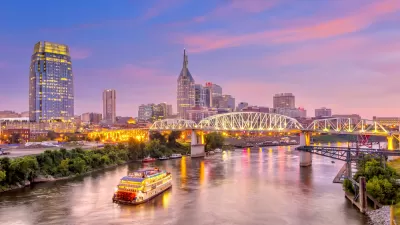Whether we've embarked on a new era of global urbanization is indisputable. The ability of architects to design attractive and humane high-rise towers to house the urban masses, however, is open to discussion, writes Sarah Williams Goldhagen.
The resounding failure of mid-century experiments by Western architects to humanely house fast-growing urban populations in buildings based on the tower-in-the-park concept demonstrated that architects were unable to successfully apply the high-rise residential building type to anyone but the super-rich, argues Goldhagen. Now, as the world embarks on a century that will be defined by the hyper-dense metropolis, she wonders if architects are up to the task of providing humane hyper-dense homes.
"The Century of the Metropolis will be the object of attention for journalists, scholars, videographers, and more for many generations, but policymakers, publics, and architects, dealers in and of the concrete, cannot wait for that. They need to figure out, now, how to make the most habitable and humane hyper-dense cities they can. And of the many challenges such an endeavor poses, no single building type presents more of a conundrum than the high-rise residential tower. As millions of urban dwellers around the globe hunt for better homes, contemporary architects are returning to a question nearly as old as the modern tall building itself: can a high-rise, high-density residential tower ever become more than an oversized packing crate for people?"
Goldhagen explores the challenges confronting architects in "designing functional, handsome, and humane high-rise residential buildings" including the need to design for multiple scales, to fight against standardization, to provide significant public spaces, and to establish a connection to the natural world, and turns to Asia for promising examples of firms who are meeting these challenges.
"Among the most impressive are firms such as WOHA (based in Singapore), Mass Studies (based in Seoul), Amateur Architecture Studio (based in Hangzhou, whose principal, Wang Shu, won this year's Pritzker Prize), and the New York City-based Steven Holl. These and a number of other firms are together making a convincing case that high-rise living need not necessitate the kinds of compromises that most people regard as inevitable. Like Gehry's, Gang's, and Nouvel's high-rise residential towers, these firms' projects cut smart silhouettes on their urban skylines, but they do much more: they weave large numbers of unusually designed and comfortable homes into vertical communities. Together these buildings and their architects belie the common belief that high-rise towers must be ugly necessities rather than desirable contributions to life in the contemporary metropolis."
FULL STORY: Sarah Williams Goldhagen on Architecture: Living High

Alabama: Trump Terminates Settlements for Black Communities Harmed By Raw Sewage
Trump deemed the landmark civil rights agreement “illegal DEI and environmental justice policy.”

Study: Maui’s Plan to Convert Vacation Rentals to Long-Term Housing Could Cause Nearly $1 Billion Economic Loss
The plan would reduce visitor accommodation by 25% resulting in 1,900 jobs lost.

Planetizen Federal Action Tracker
A weekly monitor of how Trump’s orders and actions are impacting planners and planning in America.

Wind Energy on the Rise Despite Federal Policy Reversal
The Trump administration is revoking federal support for renewable energy, but demand for new projects continues unabated.

Passengers Flock to Caltrain After Electrification
The new electric trains are running faster and more reliably, leading to strong ridership growth on the Bay Area rail system.

Texas Churches Rally Behind ‘Yes in God’s Back Yard’ Legislation
Religious leaders want the state to reduce zoning regulations to streamline leasing church-owned land to housing developers.
Urban Design for Planners 1: Software Tools
This six-course series explores essential urban design concepts using open source software and equips planners with the tools they need to participate fully in the urban design process.
Planning for Universal Design
Learn the tools for implementing Universal Design in planning regulations.
Caltrans
Smith Gee Studio
Institute for Housing and Urban Development Studies (IHS)
City of Grandview
Harvard GSD Executive Education
Toledo-Lucas County Plan Commissions
Salt Lake City
NYU Wagner Graduate School of Public Service




























